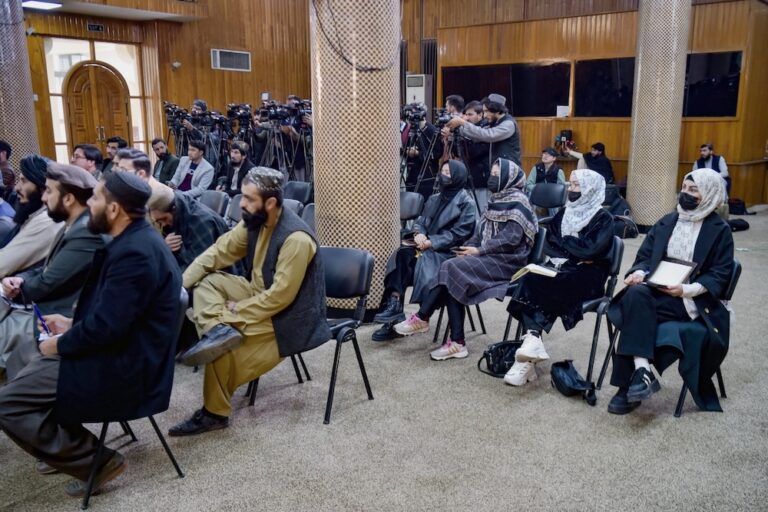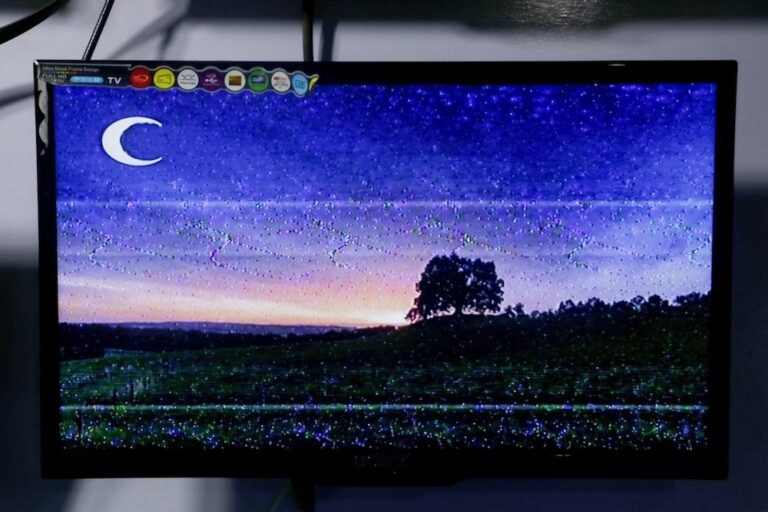(RSF/IFEX) – Reporters Without Borders has reiterated its call for the release of “La Repubblica” correspondent Daniele Mastrogiacomo’s Afghan fixer, Adjmal Nasqhbandi, who on 26 March 2007 began his fourth week in captivity in southern Afghanistan. Many appeals for his release have been issued in Afghanistan and Italy in recent days. The press freedom organisation […]
(RSF/IFEX) – Reporters Without Borders has reiterated its call for the release of “La Repubblica” correspondent Daniele Mastrogiacomo’s Afghan fixer, Adjmal Nasqhbandi, who on 26 March 2007 began his fourth week in captivity in southern Afghanistan. Many appeals for his release have been issued in Afghanistan and Italy in recent days.
The press freedom organisation said it also paid homage to Mastrogiacomo’s driver, Sayed Agha, whose body has still not been returned to his family.
“There is no justification for continuing to hold Nasqhbandi or for refusing to return Agha’s body,” Reporters Without Borders said. “It is clear the Taliban have already obtained a great deal in this tragic affair. Mullah Dadullah’s attitude and his threat to kidnap other journalists run counter to the undertakings given by other Taliban leaders towards the press. We condemn Dadullah’s behaviour and statements, which pose a serious threat to Afghan and foreign journalists working in the south of the country.”
A journalist aged 25, Nasqhbandi has reportedly been held by Dadullah’s men ever since Mastrogiacomo, Agha and he were taken prisoner in Helmand province on 5 March. Dadullah himself told Pakistani journalist Rahimullah Yousafzai that Nasqhbandi was still being held, adding that “the Karzai government was only interested in the Italian.” Taliban spokesmen have demanded the release of more Taliban prisoners in exchange for Nasqhbandi.
According to some accounts, however, the Afghan security forces could now be holding Nasqhbandi and Rahmatullah Hanefi, manager of “Emergency” hospital. Mastrogiacomo said he thought Nasqhbandi was released at the same time as he was, but was placed in a different vehicle. A Taliban chief also told an Afghan journalist that, if he wanted news of Nasqhbandi, he should ask the government in Kabul. Reporters Without Borders calls on the government to respond to these allegations.
On 23 March, Mastrogiacomo and the editor of “La Repubblica” appealed for the release of Nasqhbandi, whose photo is to be displayed outside Rome’s city hall. The Italian journalists’ organisation “Fourth Power” ( http://www.quartopotere.org ) also issued a call for his release on 25 March. In Kabul, one of his brothers appealed for his release, saying the only news he had received of him was a video message dated 12 March in which he said he was well and had been arrested for “entering a Taliban region without permission.”
Mullah Dadullah’s men have meanwhile demanded the release of a Taliban chief, Mulluh Janaan, in exchange for the body of Agha, Mastrogiacomo’s driver. Members of Agha’s family went to Garmseer, a village in Helmand province, to recover his body, and were stopped and turned back by Taliban. Aged 25, Agha often worked as a driver and fixer for foreign journalists in Helmand province, including Tom Coghlan of the London-based “Daily Telegraph” newspaper.
Coghlan paid the following tribute to Agha:
“Sayed Agha was a gentle, witty and deeply likeable young man. . . . Access was quite impossible to achieve without the tribal connections and guarantees that a local man like Sayed was able to provide. But with his work came a great level of risk. His willingness to take such risks is something that was hard to understand. I can only assume he found what he did exciting, and unlike many people in the south of Afghanistan he seemed to have a genuine liking for, and interest in, foreign ‘infidels’. But while the journalist coming in accepts a level of danger, we can leave again for the safety of the capital, Kabul. For men like Sayed, becoming known as someone who works with foreigners is a permanent threat to their lives.
Sayed was not ignorant of this, but nor did he ever attempt to limit what the reporters he worked with asked of him. When, for instance, we spent a day together following a poppy eradication team, it was only afterwards that he told me that he believed that his car would now be unusable in that district because it would be suspected of government connections. In rural Helmand few unfamiliar faces escape notice for long.
His powerful tribal connections and personal friendships with people within local Taliban groups offered a level of protection. But as he admitted himself, if the wrong people got hold of us, there would be nothing he could do.
Sadly it was the wrong people who took him, Daniele Mastrogiacomo and their translator, two weeks ago. Mullah Dadullah Akhund is the best known and most feared Taliban commander operating in the south. He has been compared to the Iraqi insurgent leader Abu Musab Al-Zarqawi for his extremist beliefs, psychopathic savagery and love of self-promotion. It is a measure of Dadullah’s character that Mullah Omar, the spiritual leader of the Taliban, sacked him as commander of Taliban forces in Bamiyan in 1998 because his behaviour towards the Shia Muslim Hazara people of the region, whom Dadullah considered heretics, was too brutal even for Omar’s tastes. . . . Dadullah and his cohorts chose to release Mastrogiacomo, which was very welcome news. But despite the efforts of Sayed’s Afghan friends and family to intercede with Dadullah on his behalf, the Taliban announced last Friday that Sayed Agha had been beheaded.”
Mastrogiacomo was released on 19 March in exchange for five Taliban, including a brother of Mullah Dadullah.


